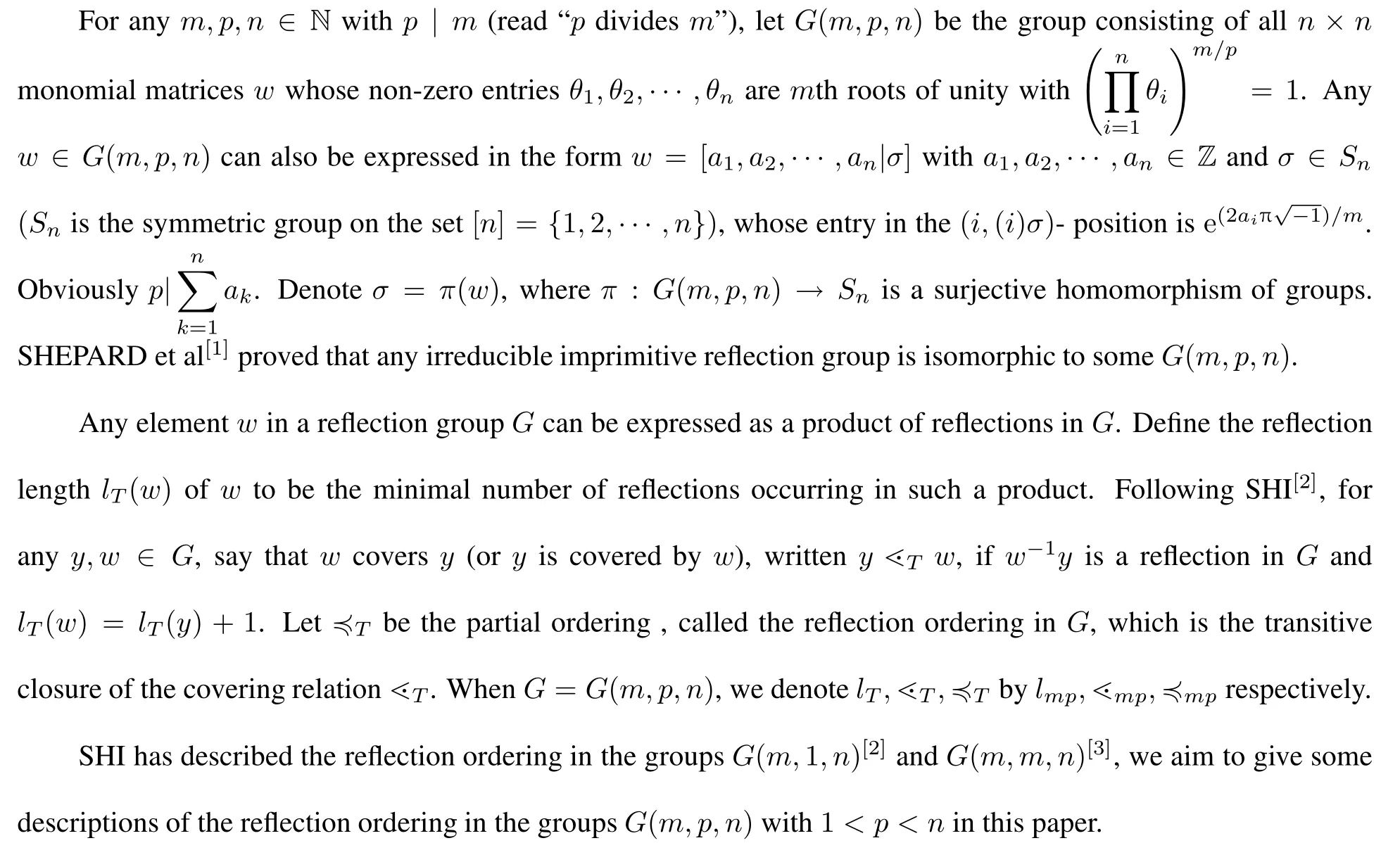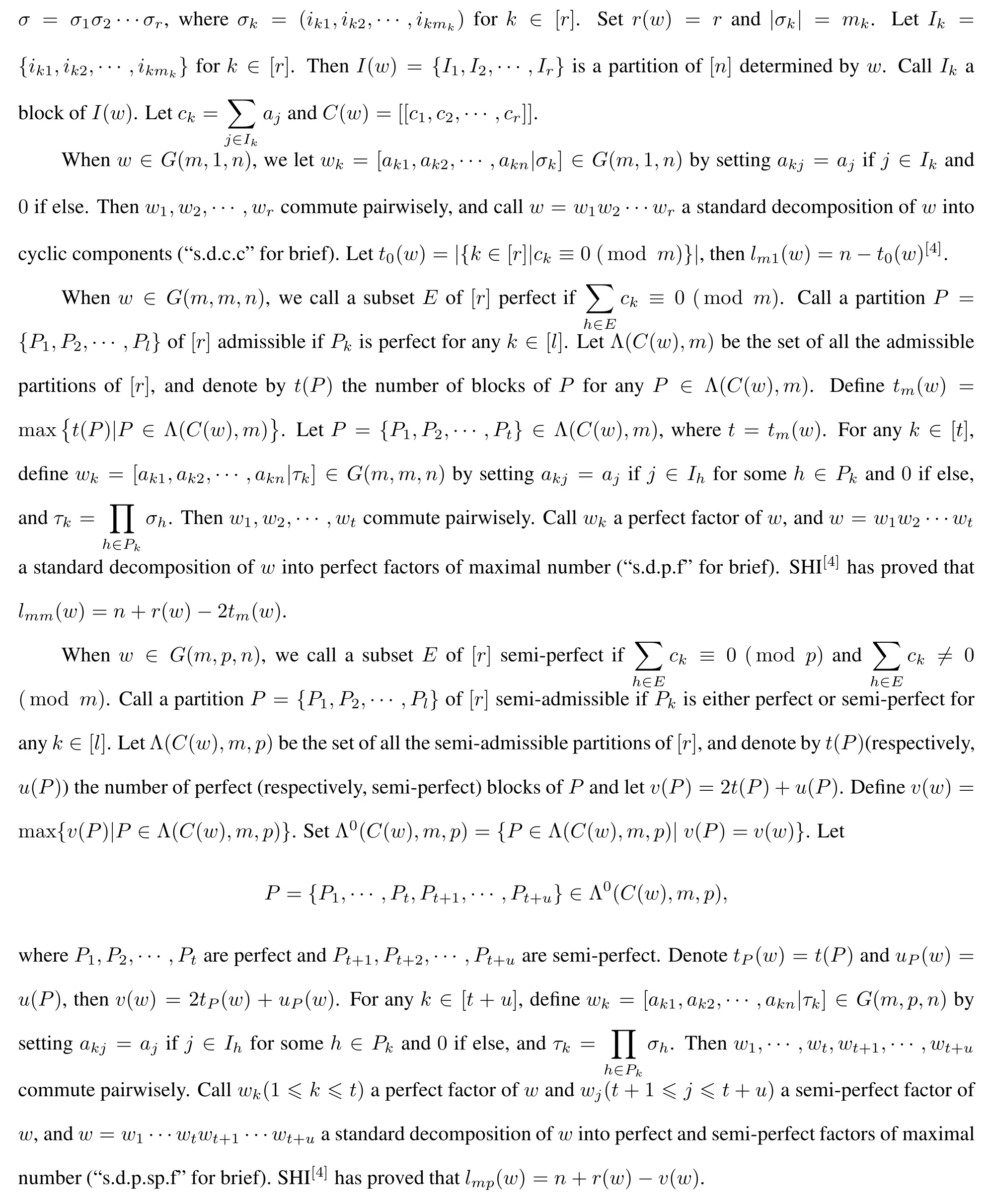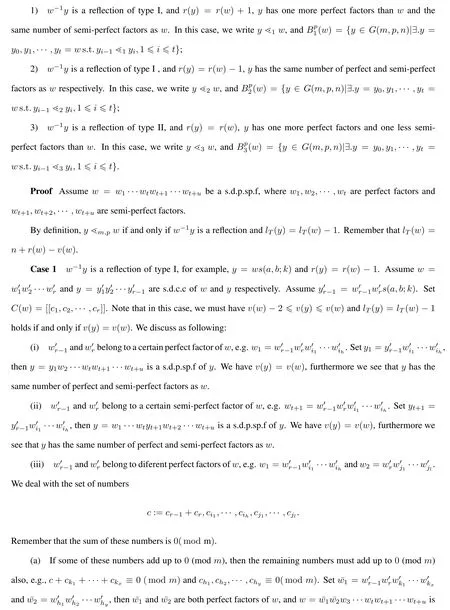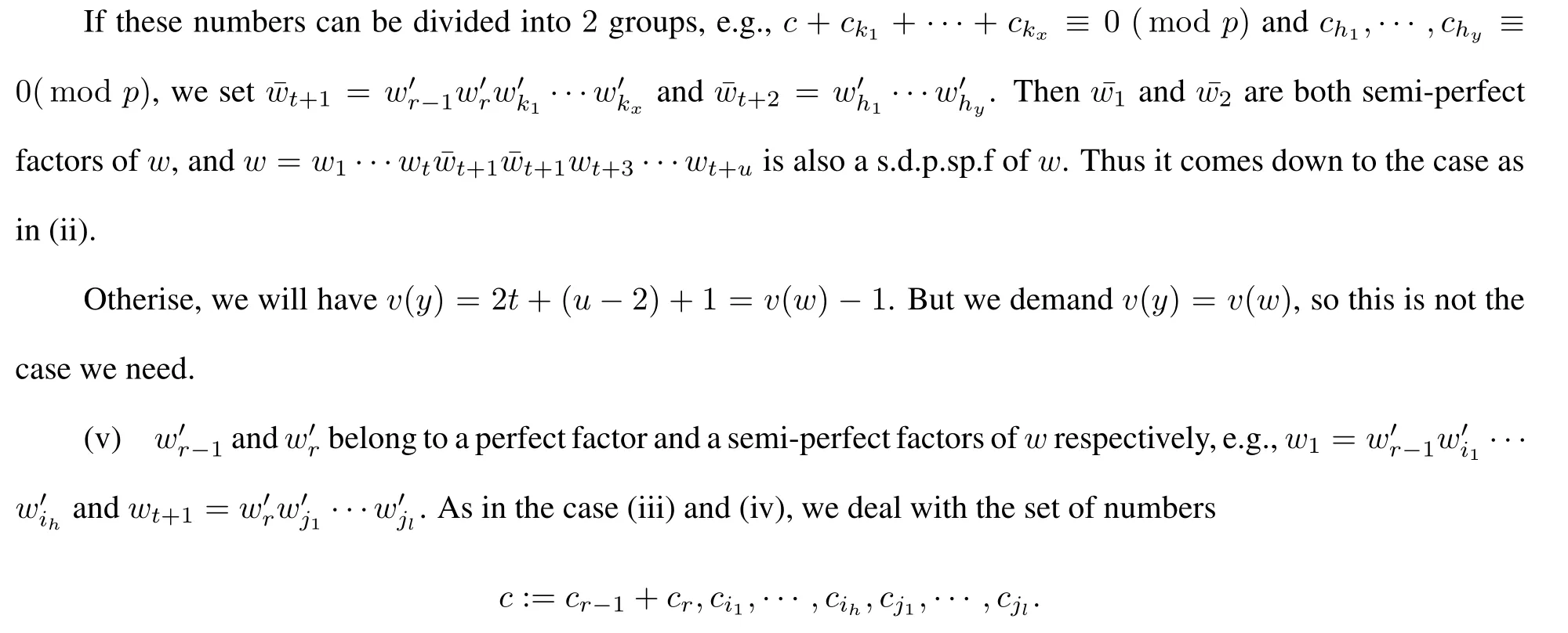Reflection ordering in the imprimitive complex reflection group G(m,p,n)
2021-07-21HONGFeifeiLIJingjingWANGLi
HONG Feifei ,LI Jingjing ,WANG Li
(1.High School Affiliated to Shanghai University of Finance and Economics,Shanghai 200090,China;2.Songjiang Experiment School Affiliated to Shanghai Normal University,Shanghai 201601,China;3.Mathematies and Science College,Shanghai Normal University,Shanghai 200234,China)
Abstract:Assume that m,p and n are positive integers,and p divides m.Let G(m,p,n)be an imprimitive complex refelction group.A partial ordering is introduced in the group G(m,p,n),as following reference,which is called the reflection ordering.We will study the reflection ordering in the group G(m,p,n)with 1 Key words:imprimitive complex reflection groups;reflection length;reflection ordering Let N(respectively,Z,R,C)be the set of all positive integers(respectively,integers,real numbers,complex numbers).Let V be a Hermitian space of dimension n.A reflection in V is a linear transformation of V of finite order with exactly n−1 eigenvalues equal to 1.A reflection group G on V is a finite group generated by reflections in V.A reflection group G is called a Coxeter group if there is a G-invariant R-subspace V0of V such that the canonical map C⊗RV0→V is bijective.A reflection group G on V is called imprimitive if V is a direct sum of nontrivial linear subspaces V =V1⊕V2⊕···⊕Vtsuch that every element w∈G is a permutation on the set{V1,V2,···,Vt}. An element w=[a1,a2,···,an|σ]∈G(m,p,n)is a reflection if and only if one of the following conditions holds: Theorem 1Assume y,w∈G(m,p,n),then yw if and only if one of the following conditions hold: Otherwise,we intend to divide these numbers in to several groups such that the sum of each groupis 0(mod p).Note that these numbers can be divided into at most 4 groups.If not,we will have v(y)>2(t−2)+u+4=v(w),which is absurd. Remember that the sum of these numbers is 0(mod p).We intend to divide these numbers into several groups such that the sum of each group is 0(mod p).Note that these numbers can at most be divided into 2 groups.If not,we will have v(y)>2t+(u−2)+2=v(w),which is absurd. Remember that the sum of these numbers is 0(mod p). (a) If some of these numbers add up to 0(mod m),then the remaining numbers must add up to 0(mod p).Then it comes down to the case as in(i)or(ii). Otherwise,we intend to divide these numbers into several groups such that the sum of each group is 0 ((mod p).Note that these numbers can at most be divided into 3 groups.If not,we will have v(y)>2(t−1)+(u−1)+3=v(w),which is absurd. (b) If these numbers can be divided into 3 groups,we do the proof as in(iii)(a)and it comes down to the case as in(ii). (c) If these numbers can be divided into 2 groups,then v(y)=2(t−1)+(u−1)+2=v(w)−1.But we demand v(y)=v(w),so this is not the case we need. (d) If none of(a),(b)and(c)happens,since the sum of these numbers is 0(mod p),we setThenis a semi-perfect factor.And v(y)=2(t−1)+(u−1)+1=v(w)−2.But we demand v(y)=v(w),so this is not the case we need. Thus we have proved(2). Case 2w−1y is a reflection of type I and r(y)=r(w)+1,then y−1w is also a reflection of type I and r(w)=r(y)−1.Now lT(y)=lT(w)−1 holds if and only if v(w)=v(y)−2.Exchange the role of w and y in case 1,we see this happens only in(iii)(d)and(v)(d).Thus case 2 holds if and only if the number of perfect factors of y is one more than that of w,and they have the same number of semi-perfect factors.Thus 1)of theorem 1 follows. Case 3w−1y is a reflection of type II,forexample,y=ws(a;kp),then r(y)=r(w),and lT(y)=lT(w)−1 holds if and only if v(y)=v(w)+1.In this case,the action of s(a;kp)must turn a semi-perfect factor of w to a perfect factor of y.So 3)of theorem 1 follows.1 Introduction

2 Prelimilary


3 Main results








杂志排行
上海师范大学学报·自然科学版的其它文章
- Multiple rogue wave and multiple lump solutions of a(3+1)-dimensional Korteweg-de Vries equation
- Asymptotic stability of linear multistep methods and Runge-Kutta methods for homogeneous differential-algebraic equations with rectangular coefficients
- A spectral method for Burgers equation using Jacobi polynomial
- A graph-theoretic approach to topology identification of stochastic multi-group models with multiple dispersal
- Anti-periodic solution for fuzzy differential equations
- Generalization of existence theorems of root and its application
